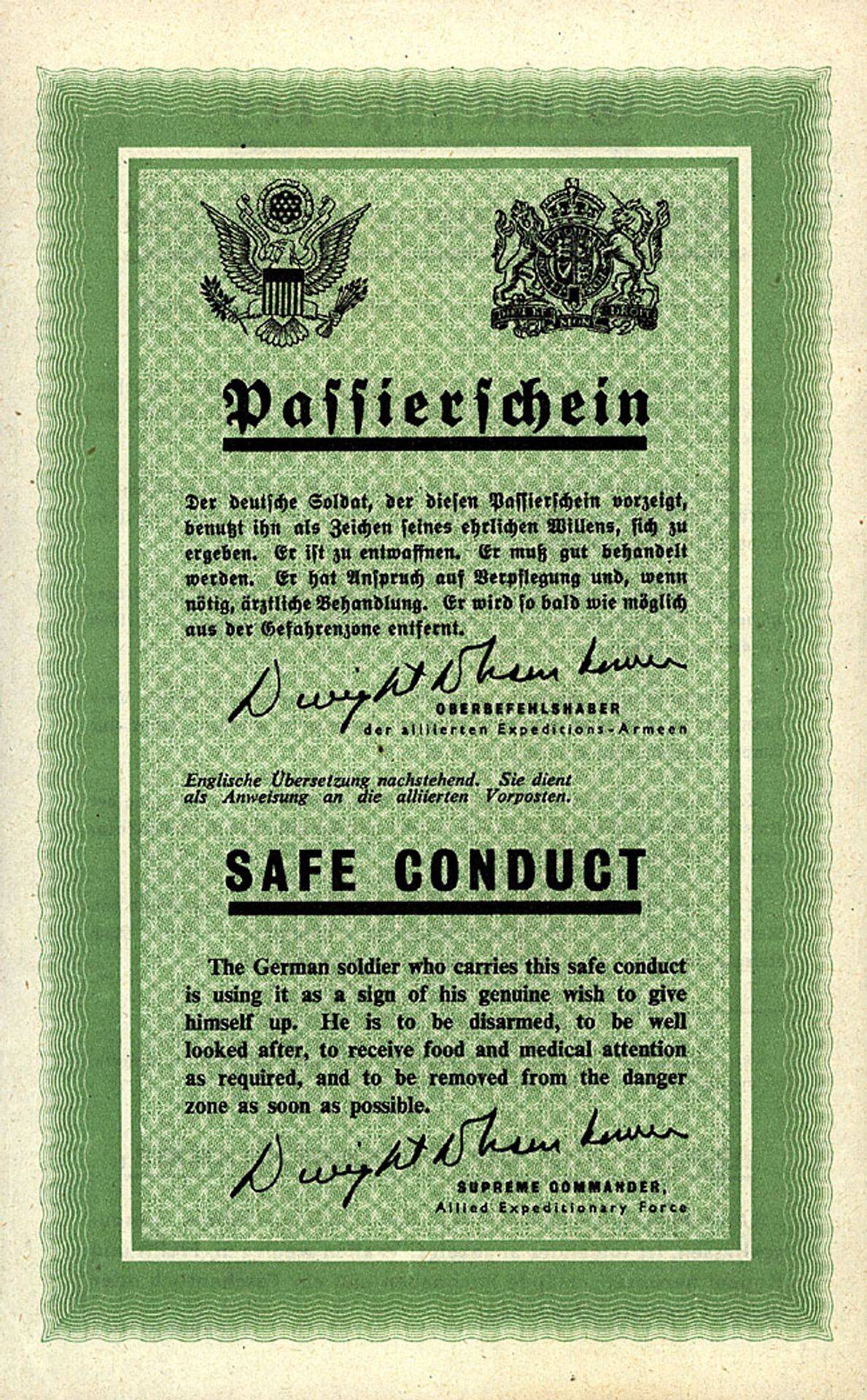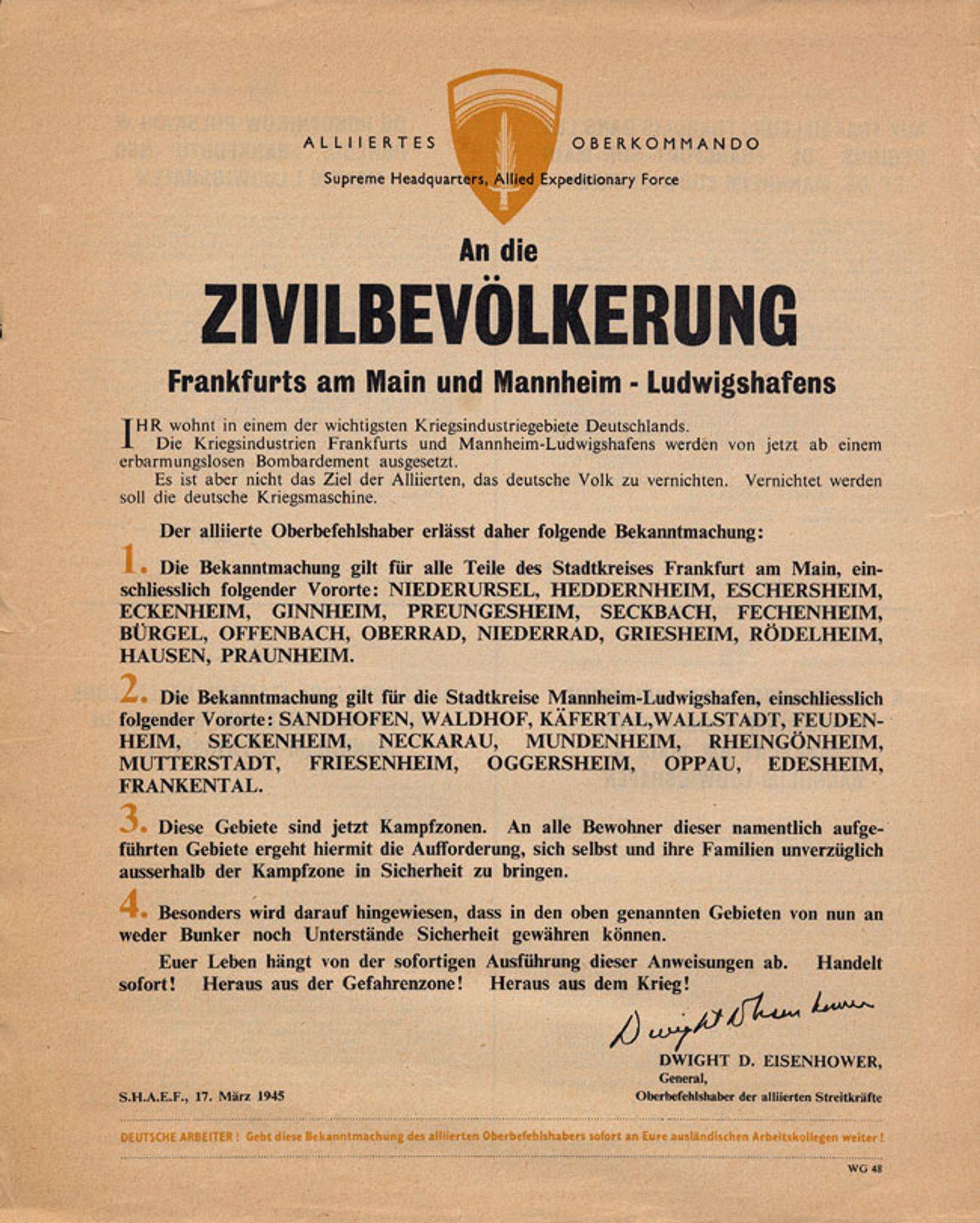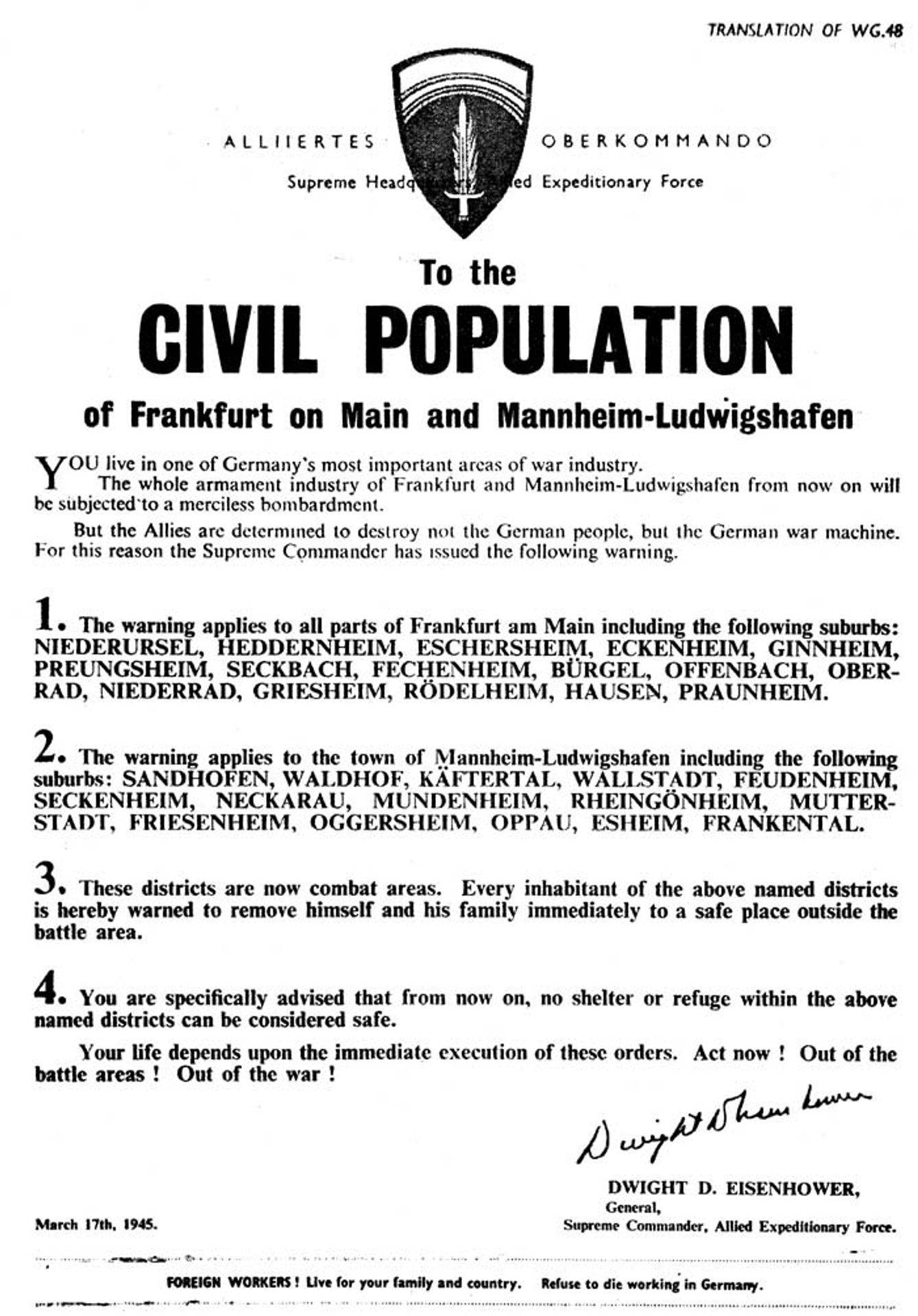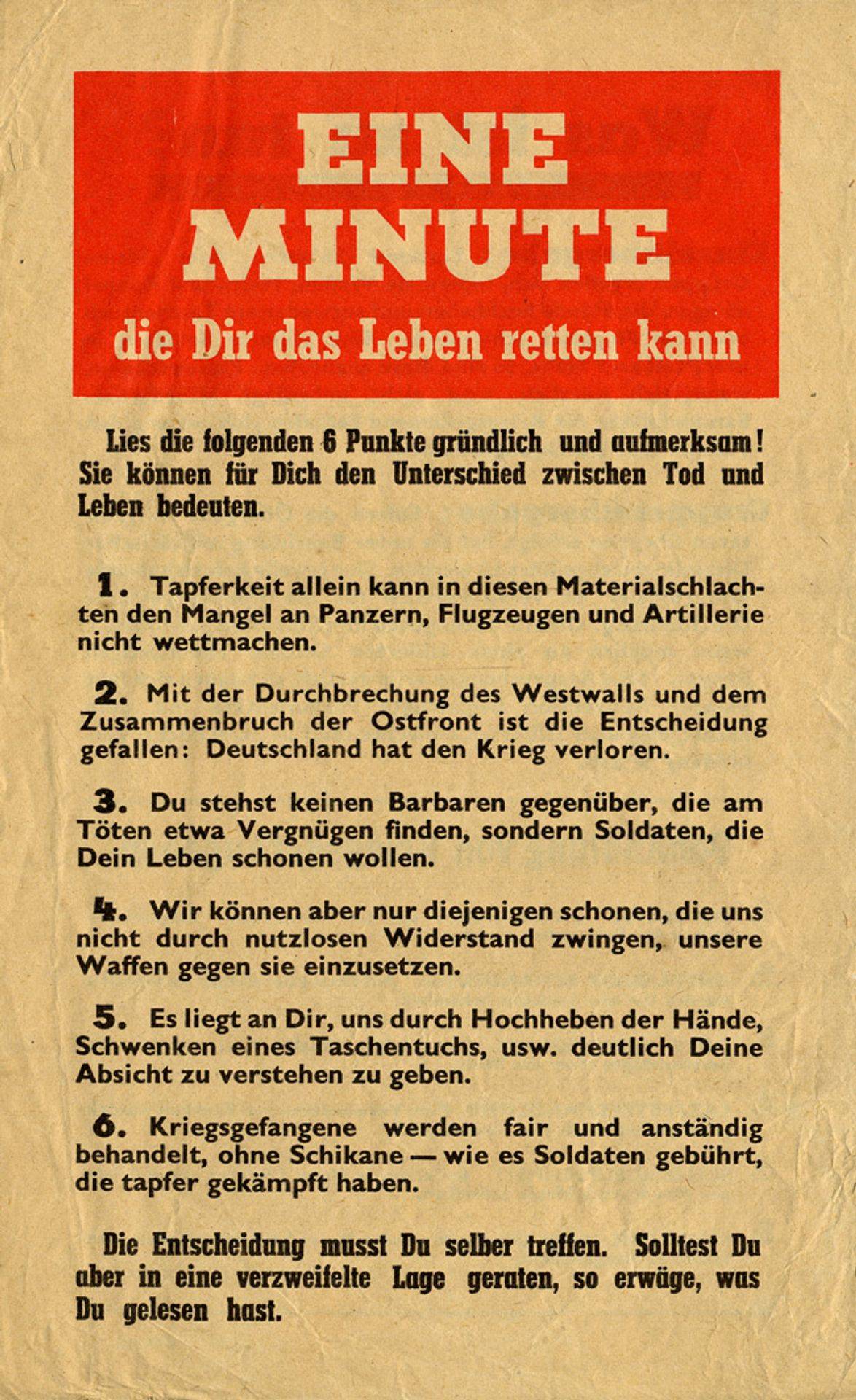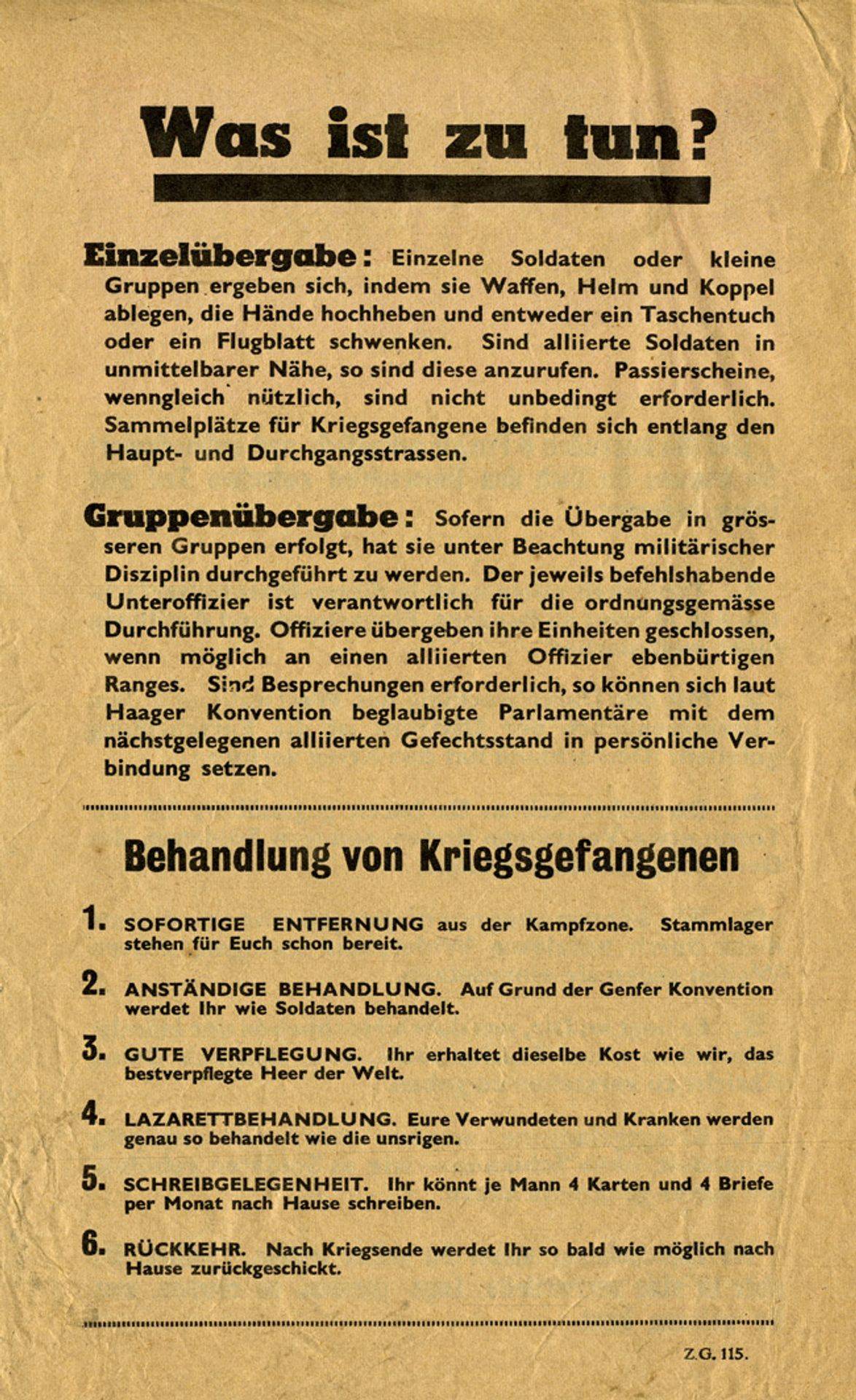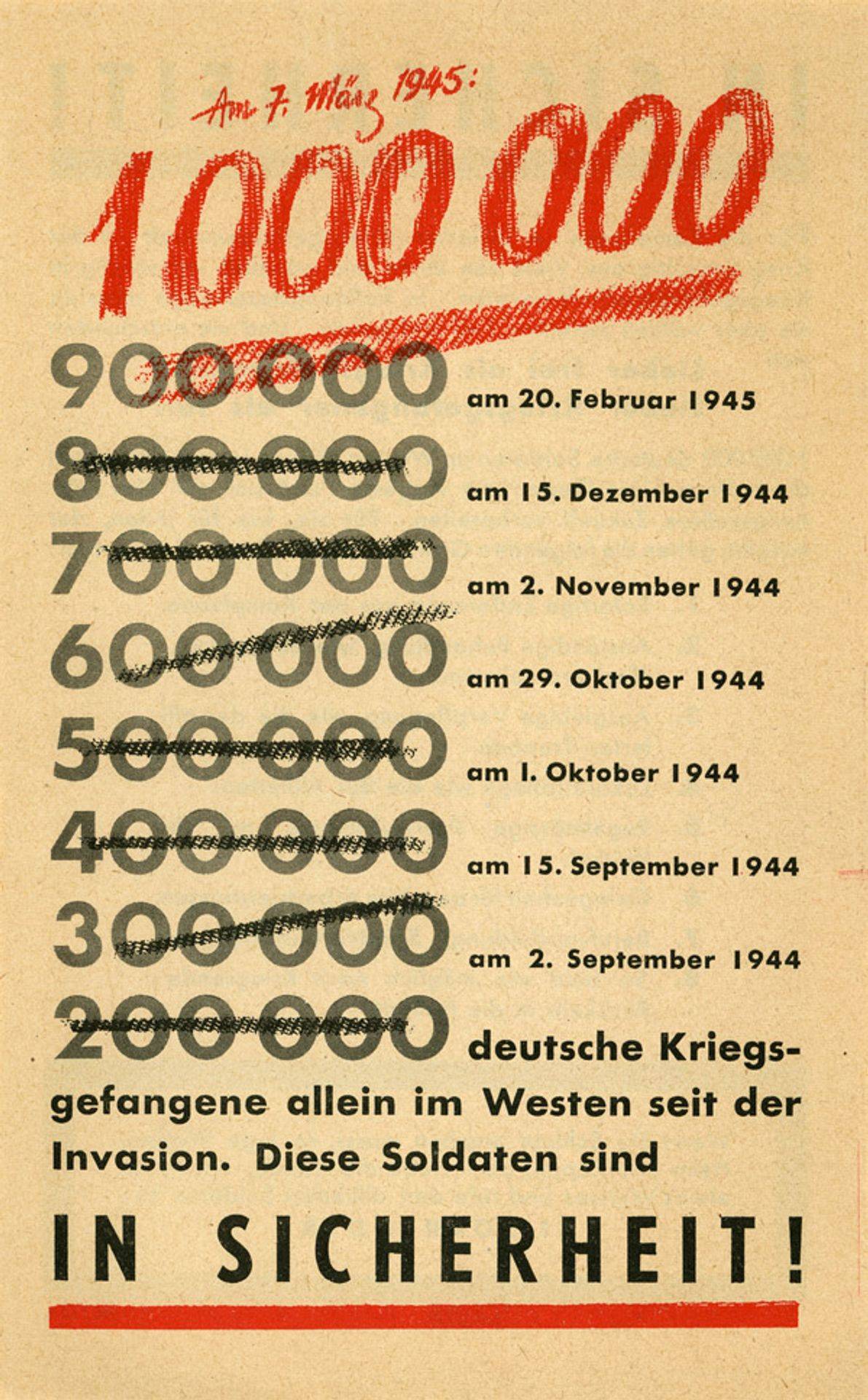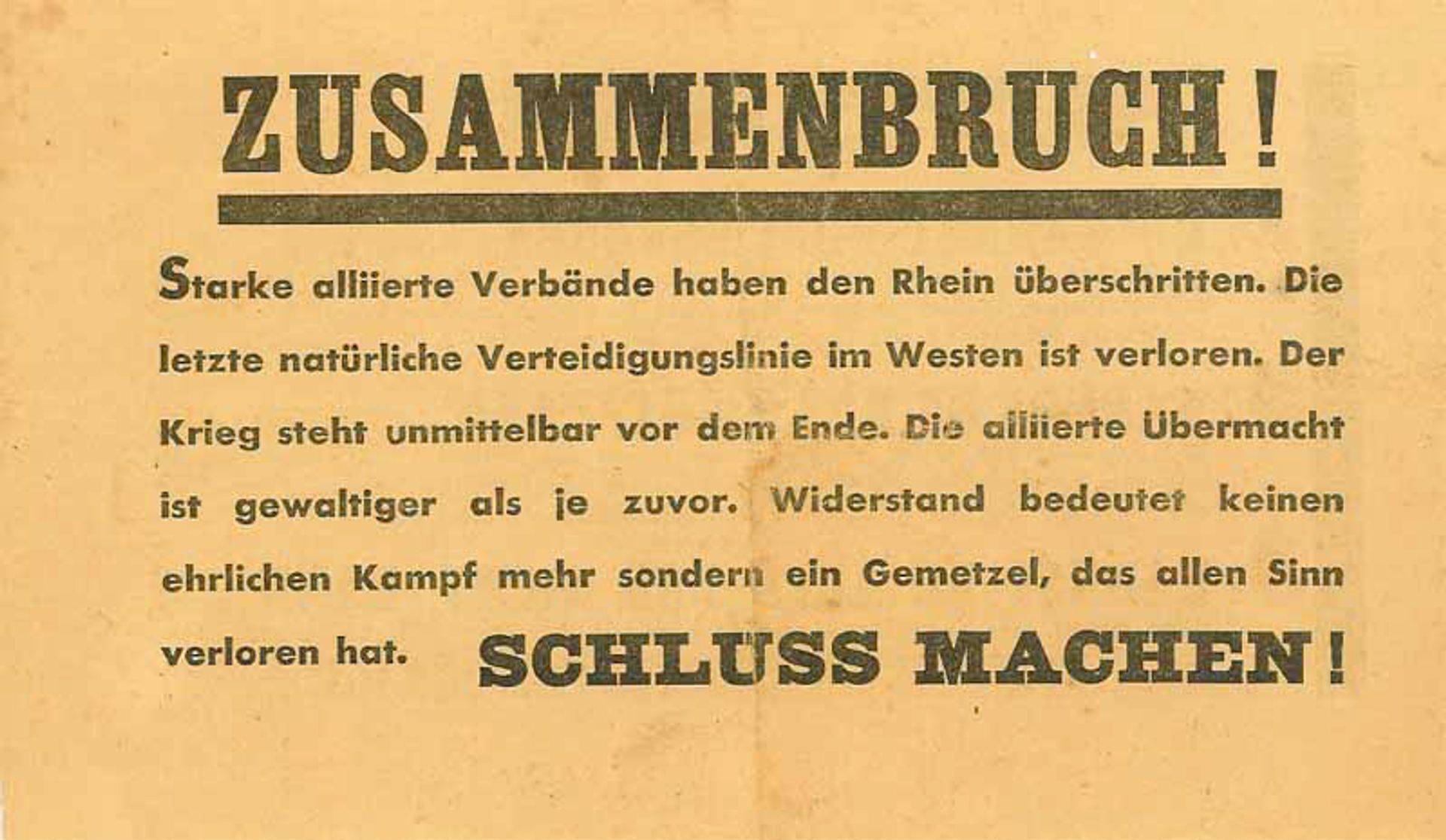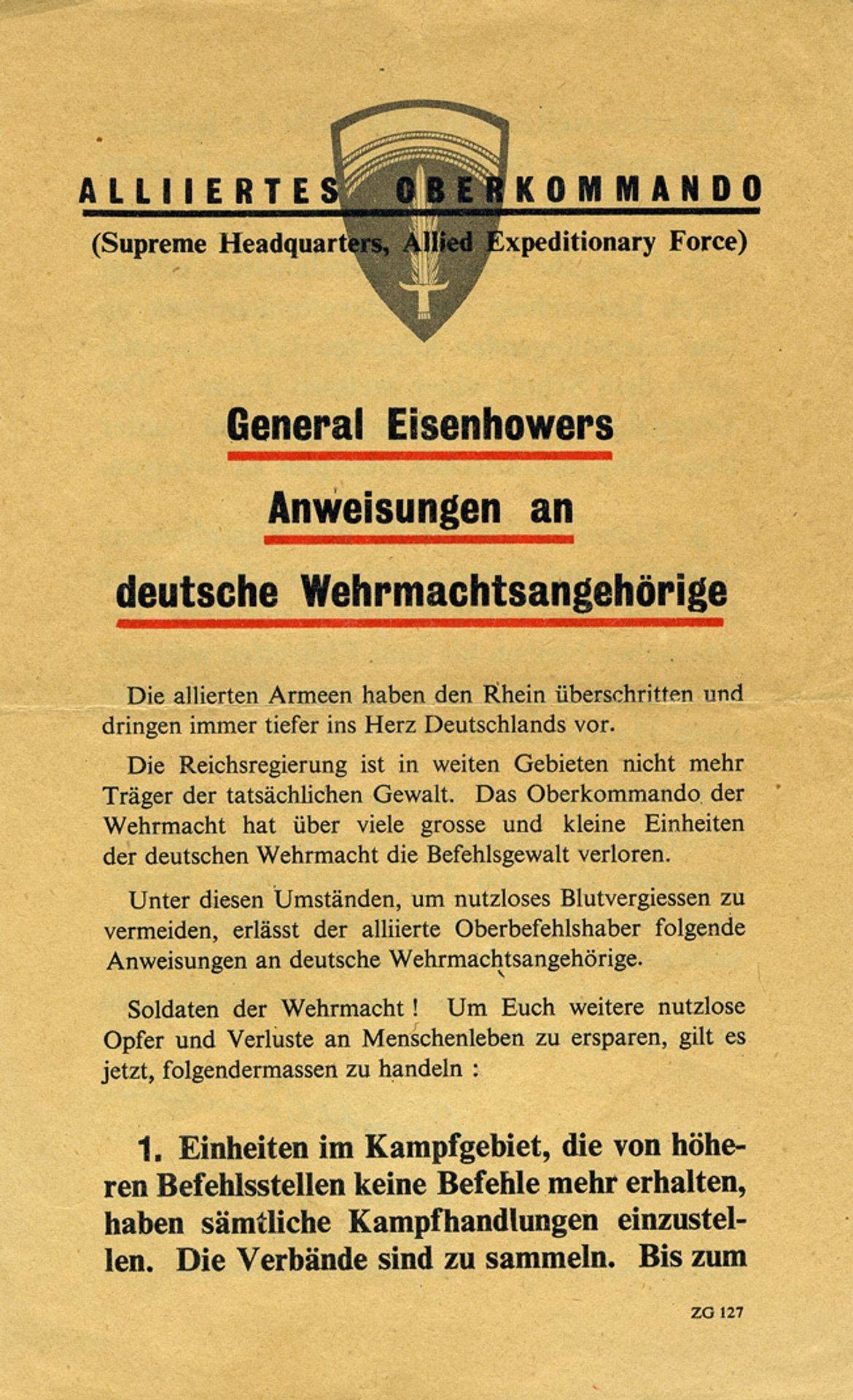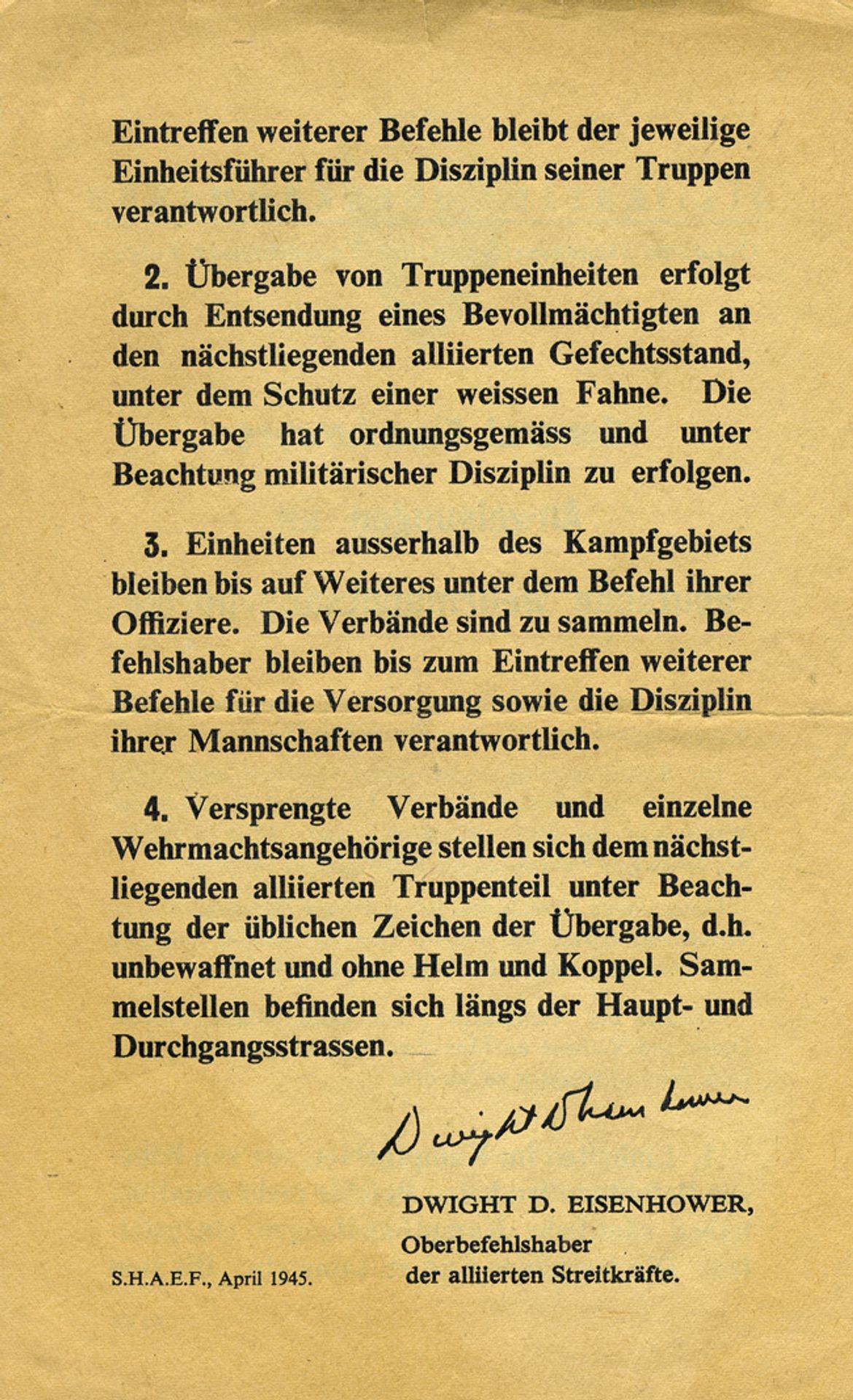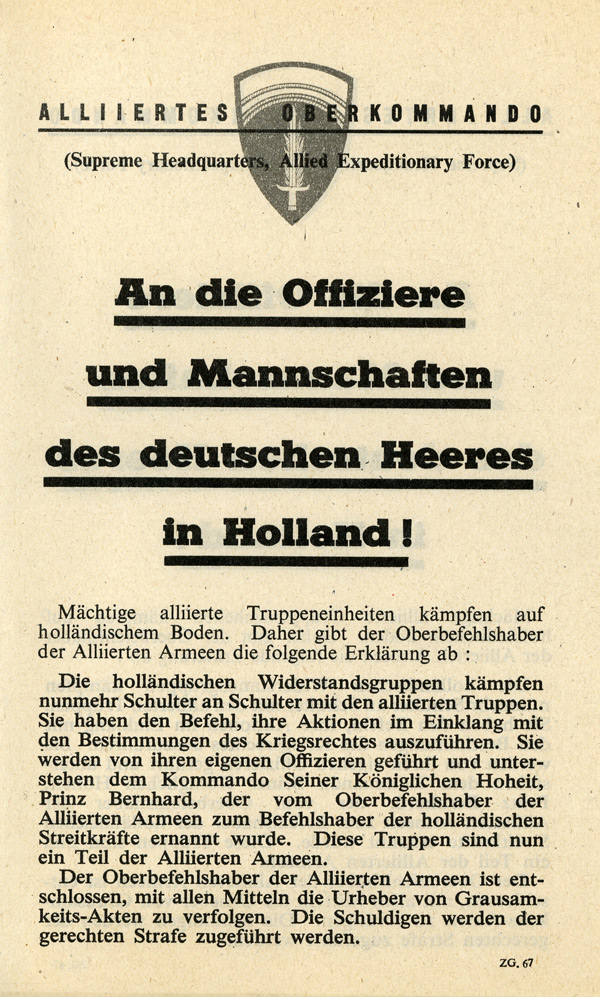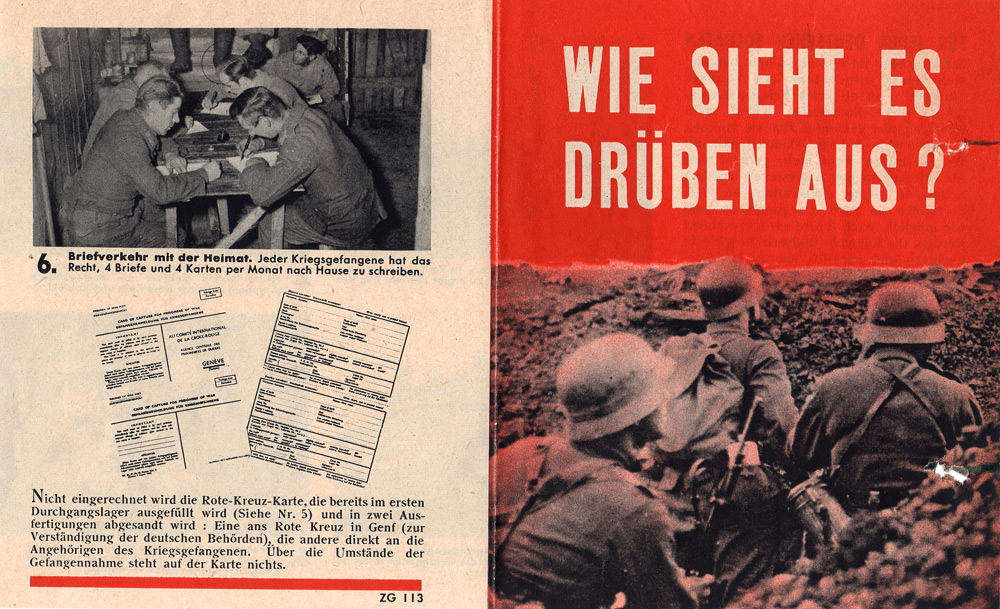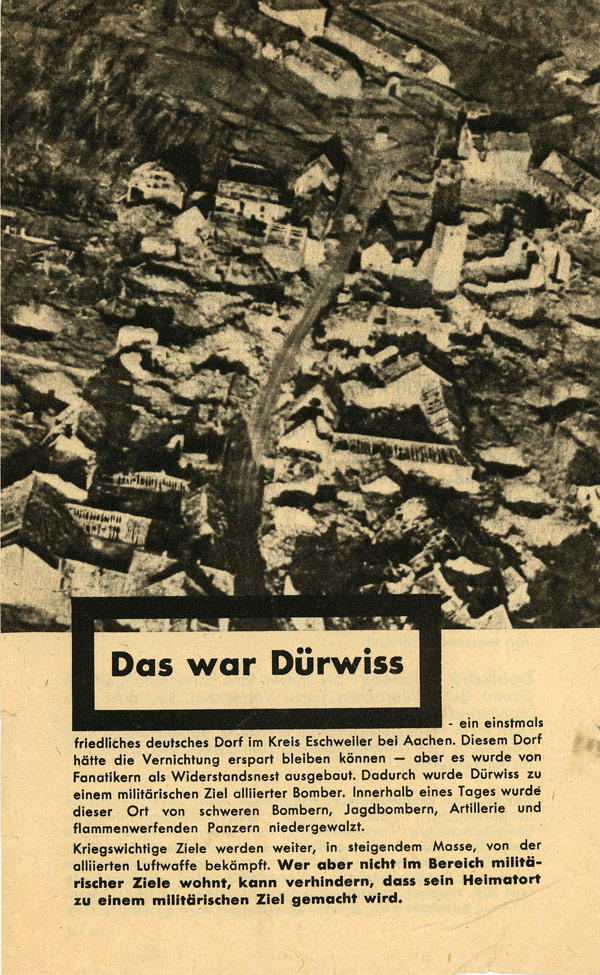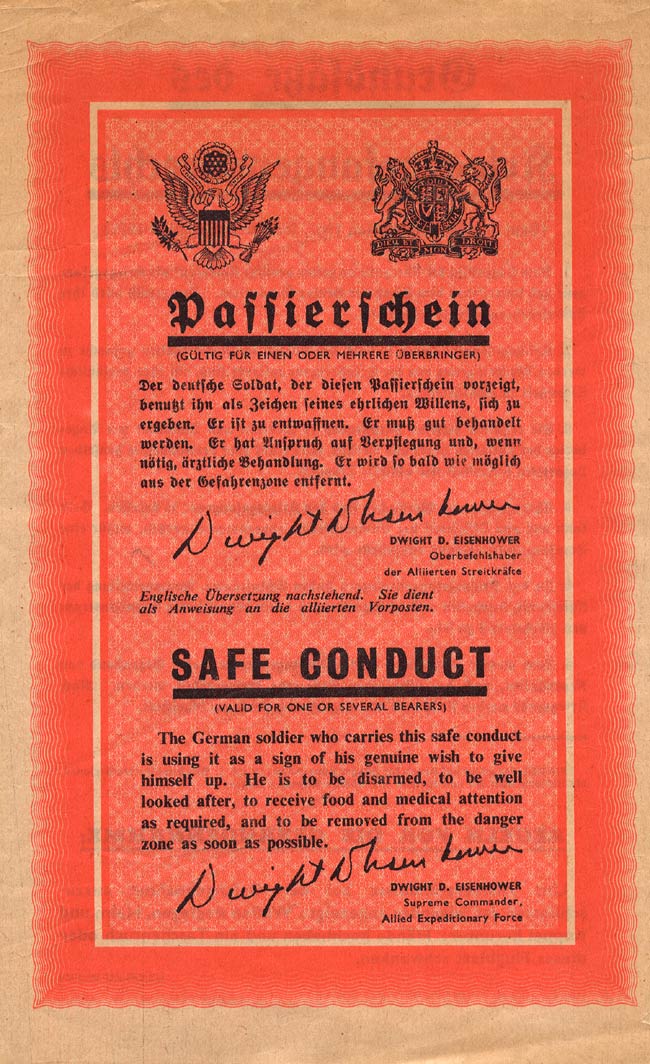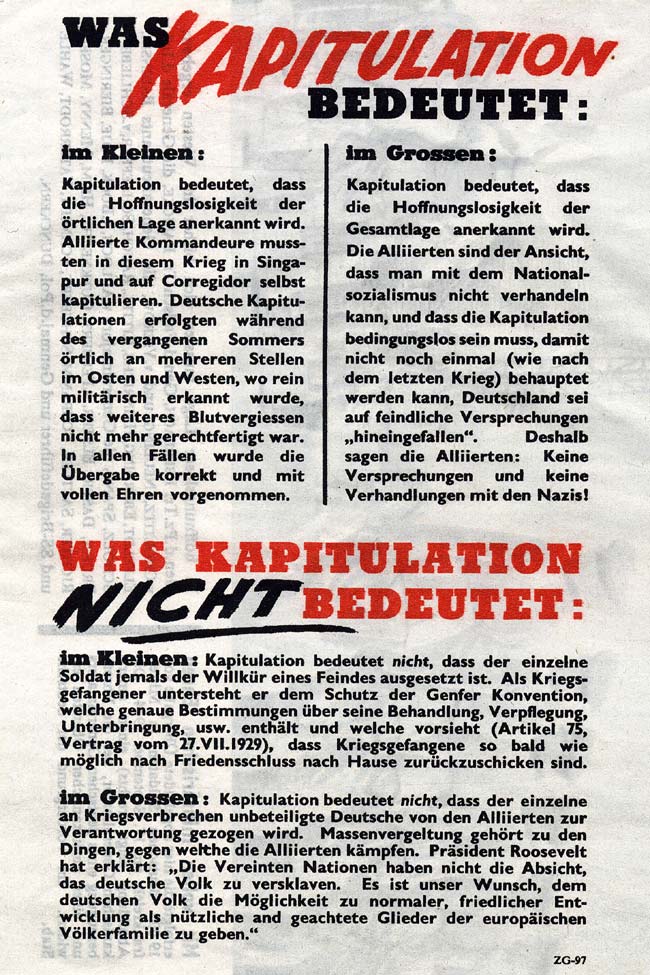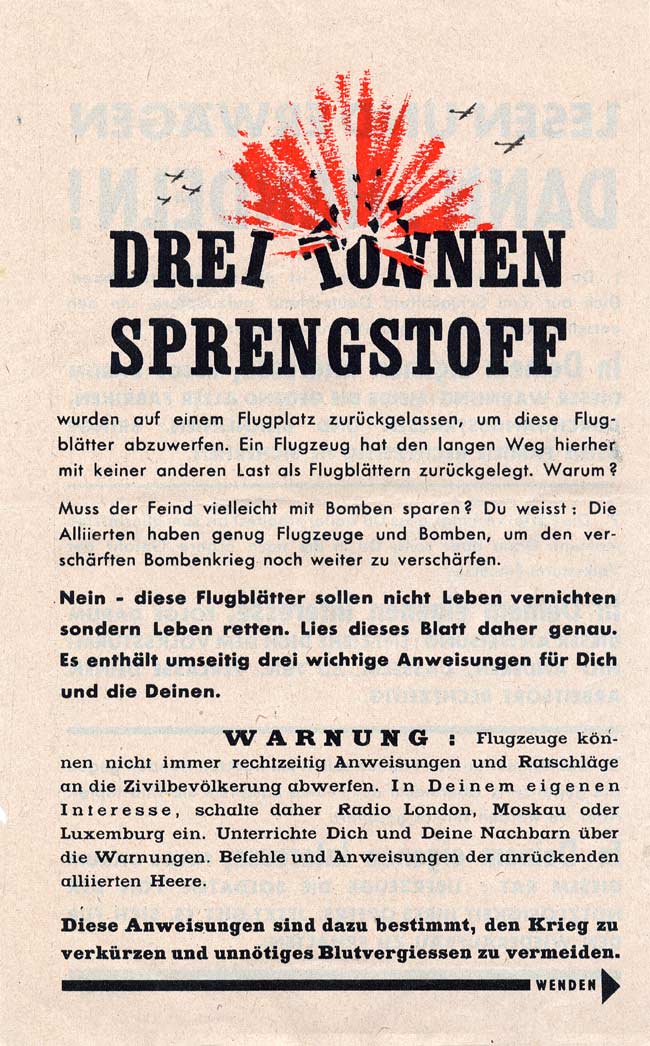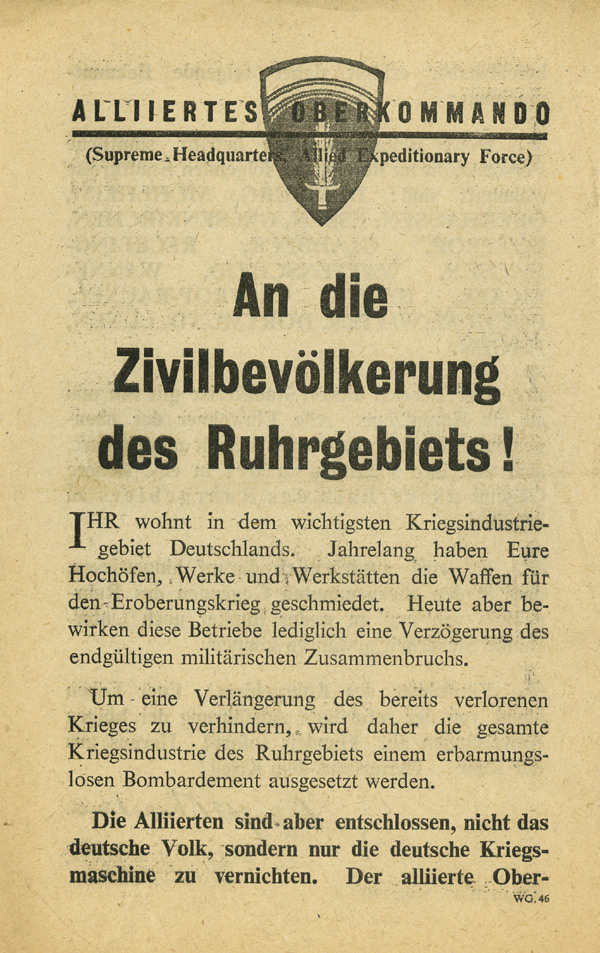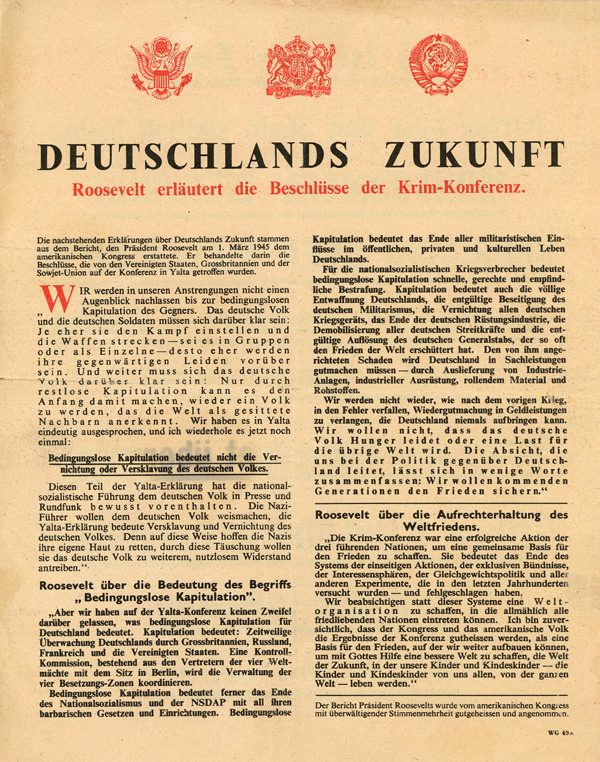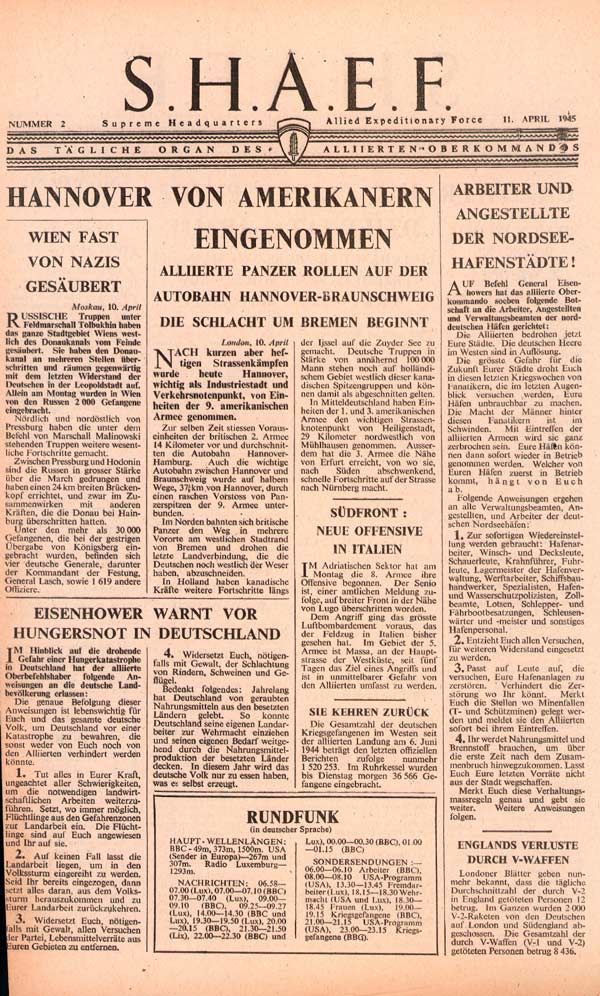458th Bombardment Group (H)
Leaflet Raids
Three crews assigned to the 458th in November 1944 were transferred to the 406th Night Leaflet Squadron before they had time to unpack. Two of these crews, pilots 2Lt Hilburn F. Richards, and 2Lt Wallace M. Pollard went on to fly a number of night missions, dropping leaflets over Germany in March and April 1945. The third crew, pilot 2Lt Raymond L. Hendrix, crashed on an operational mission on January 3, 1945 and were all killed in action.
The following is an excerpt from an article written by Jared Tracy that appears on the website http://www.psywar.org. All images of leaflets appearing below were donated to the same website by Lee Richards, author of The Black Art, an excellent book on Britain’s propaganda efforts against Germany during World War II.
Excerpt from Leaflet Drops in America’s Conflicts, 1917-2007 by Jared Tracy
Aerial leaflet drops on enemies, neutrals, and civilian populations is an afterthought in American airpower historiography. Airpower historians have traditionally preferred topics such as strategic bombing, tactical ground support, airpower’s place in national strategic planning, and the like. But since the introduction of the airplane into combat operations in the early twentieth-century, American civilian and military officials have ordered leaflets to be dropped with bombs. Historians have not sufficiently explored the topic of leaflet drops conducted independently of or in conjunction with actual combat operations. Therefore, because comprehensive studies of leaflet drops are scarce, an historical overview of the topic will add an important dimension to the study of the projection of American airpower in its conflicts. …During World War Two, views on airpower adapted to meet current operational conditions. PSYOP became an essential component of operations in the European and Pacific theaters of war. As will be evidenced, leaflet drops in particular comprised a significant portion of air operations during the Second World War.
The U.S. Eighth Air Force inherited many techniques from the Royal Air Force (RAF) when it began its leaflet operations in summer of 1943. In the European theater of operations during World War II, U.S. Strategic Air Force bombers emanating from England and the Mediterranean delivered leaflets over occupied territory. From 1944 onward, the British and American PSYOP contingents were consolidated under the Psychological Warfare Division of the Supreme Headquarters, Allied Expeditionary Forces (PWD/SHAEF). Strategic and tactical leaflet drops accelerated after the Normandy invasion. One leaflet dropped on German soldiers on the Western Front warned:
“We, the Allied heavy bombers, do not cause you any immediate harm. We leave that to the strafing machine guns of our fighters. We fly into Germany 30,000 feet above your head. Your foxholes are not our targets. We aim for the factories which produce your ammunition, the railroads which carry your supplies, and the bridges which connect you with your home…We force you to fight with your back against a paralyzed Rhineland. Think of the destruction, every time we four-engined bombers come over. And we will be back soon. You’ll be hearing from us.“
Another leaflet alarmed German soldiers, “You are living in bull’s-eyes. Again and again German soldiers are being encircled on all fronts…Only as prisoners of war can you escape annihilation.”[7] Tactical aircraft delivered these and other “fast-reacting” or situation-specific leaflets and surrender passes (Passierschein) [left] to enemy troops pinned down in combat zones.[8]
According to historian James Erdmann, American military officials believed that tactical delivery of leaflets was “the most satisfying and effective” method of affecting enemy morale. As leaflet drop operations gradually evolved to include more immediate tactical support (and as Allied bombardments outstripped leaflet operations in German cities), the messages printed on the leaflets shortened from lengthy, fact-based diatribes to simpler, visually-based messages containing a cartoon or picture and one or a few simple phrases.
The technological methods of delivering leaflets improved dramatically from the mere hand-dropping of leaflets to the construction and employment of the Monroe Leaflet Bombs [right] and “T” Propaganda Bombs, which could be delivered at higher, safer altitudes and would burst closer to the ground producing maximum saturation. The numbers of leaflets dropped in the European theater (and the flight operations required to drop them) was astounding given the inherent risk in flying against enemy air and ground defenses. Erdmann estimated that prior to D-Day, the RAF dropped 2,151,000,000 and the Eighth Air Force dropped 500,000,000 leaflets. After D-Day, once most psychological operations fell under the auspices of the PWD/SHAEF, the U.S. Army Air Force carried out the majority of leaflet missions in which 3,240,000,000 additional leaflets dropped over Axis controlled Europe.[9]
In Psychological Warfare Against Nazi Germany, PSYOP historian Daniel Lerner chronicled the Allied Skyewar campaign from 1944—1945, in which leaflet operations comprised only one of many psychological contingents. Although aerial leaflet drops were made exponentially easier with the virtual “disappearance” of the Luftwaffe, often the preferred method of leaflet delivery was by artillery shells fired over enemy lines. Artillery shelling was advantageous because it alleviated the risk in sending airmen to fly over anti-aircraft weaponry in order to drop words instead of bombs, and it settled the logistical charade concerning the relative inaccuracy (and wastage) in the early airborne leaflet operations.[10] However, artillery shells contained relatively few leaflets. For example, the 105-mm shell only contained a maximum of 500 leaflets.[11]
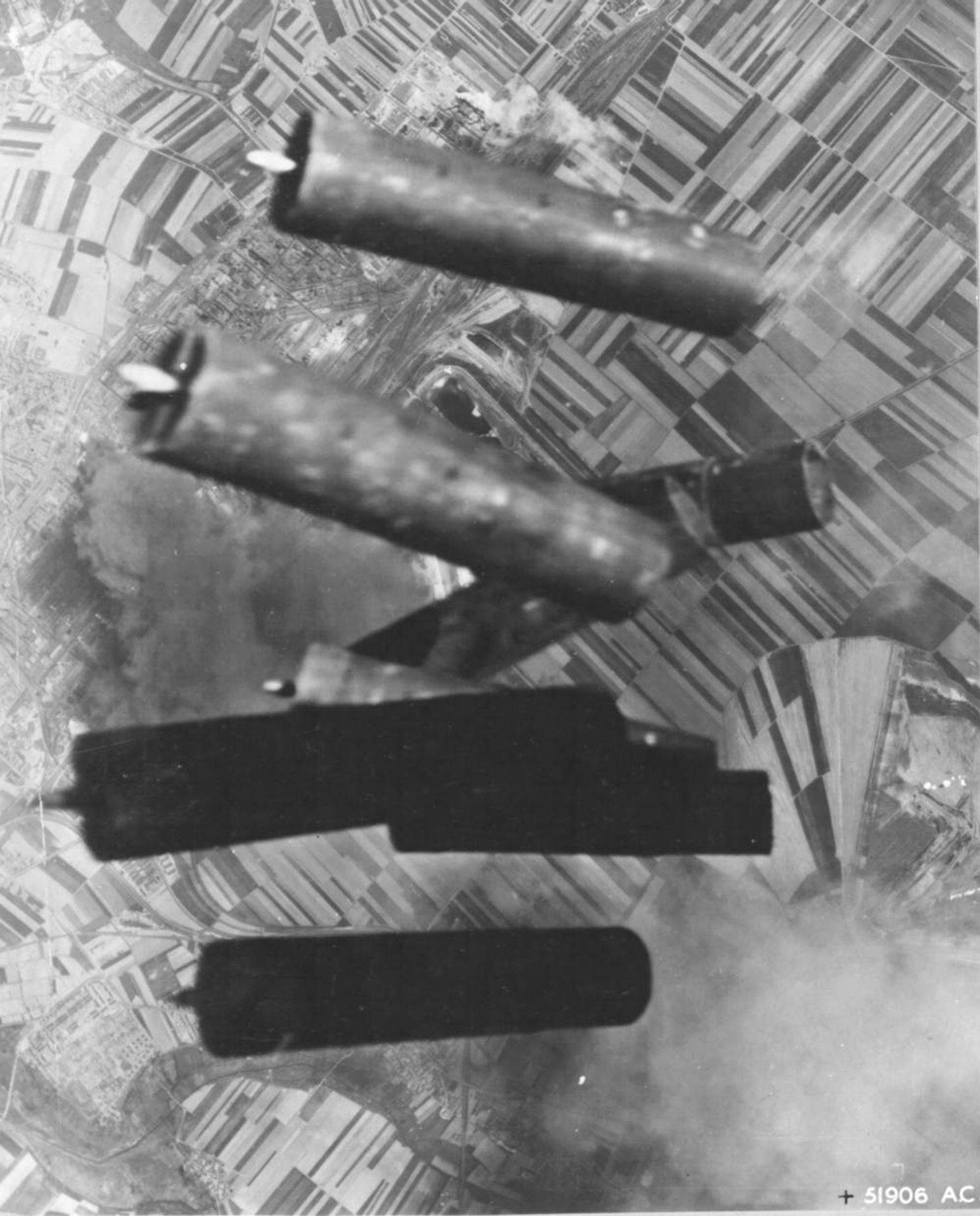
When PSYOP commanders deemed artillery delivery impossible, implausible, or undesirable, airmen were sent up for aerial leaflet drops. Many Allied PSYOP officers insisted that English-language translations of the leaflets—as well as written military justification for the drops—were provided to the airmen involved in their dissemination.[12] Commanders rightfully believed it to be important that those entrusted to deliver these messages believed in what they were doing so as to justify the risk. Crews could fly higher than before, and they were assured of more effective leaflet dissemination. As previously mentioned, newer bombs like the Monroe bombs increased the accuracy of aerial leaflet drops[13] and contained considerably more leaflets than artillery shells: the T-3 bomb dropped from fighter-bombers held 14,000 units, and the T-1 bomb used in B-17s contained 80,000.[14]
Leaflets
The leaflets below are a few examples of those that were dropped by the crews of 2Lt’s Hilburn Richards and Wallace Pollard during their tour with the 406th Night Leaflet Squadron. These images come from the Leaflet Archive at psywar.org and are credited to Lee Richards and Chris Muselet. I have used Google Translate in an attempt to help with a better understanding of the content of these leaflets – not the best translation, but the gist is there.

